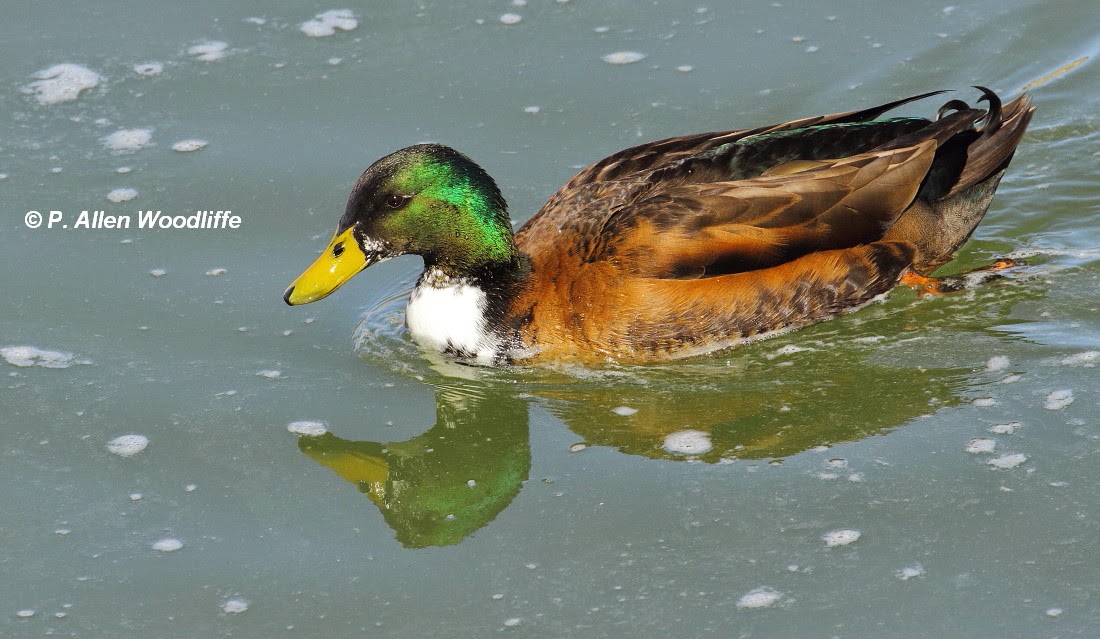It is unfortunate, but true. I have seen more dead mammals along the road sides during these last few 'warmer' days than I would normally see.
This Raccoon was along a road at Rondeau. Raccoons are sometimes out on warm days even in the depths of winter, so in a way to see one out on a warm early spring day is not surprising. However this one was likely sick. Its swollen feet are said to be indicative of distemper. Cloudy eyes may also be noticed, but I couldn't tell with this one. Distemper is a relatively common affliction in Raccoon populations, especially when numbers are fairly high. At any rate, for some reason this one apparently did not have the ability to climb onto the snow piled along the plowed roads and in its weakened state, may just have died. There were no obvious injuries.
This Virginia Opossum, on the other hand, did show signs of injury. One can see a bit of blood on the snow right in front of its nose. It likely got struck by a vehicle. Opossums used to be extremely rare in Ontario. There are various theories as to how they arrived. But it was always believed that the severe winters were particularly hard on them and was a limiting factor in their survival for those that did show up on the southern Ontario landscape. Their tail, ears and nose is exposed skin and very susceptible to extreme cold. Sometimes these extremities show signs of frost bite. Given the severity of this current winter (locally it was said to be the coldest February on record), as well as the previous winter, I expect many Opossums are having a tough time. Perhaps this individual was in a weakened state as well and not able to avoid the traffic.
I have also seen (and smelled) skunks along the road sides. Probably all of these dead critters will be just what the soon-to-arrive Turkey Vultures will need in order to survive!
While at Rondeau a couple of times this week, I saw Eastern Chipmunks out. They weren't cooperative for photography...when they saw my camera move in their direction, they immediately retreated into a hole in the snow bank! This image below is one from another time.
White-tailed Deer are not numerous, but plentiful enough, and can be seen especially along the eastern side of the park. Their somewhat reduced numbers (compared to last fall) likely enabled them to survive the winter in reasonable health.
There have been reports of Tundra Swans arriving in southern Ontario over the past few days. However they don't seem to be setting down anywhere quite yet.....probably the snow covered fields and ice covered lakes have a lot to do with it!
 |
| Lake Erie off of Rondeau |
 |
| Panoramic view of some southeast beach dunes looking over Lake Erie |
As is often the case, bird feeders are where the action is. Along with the more abundant regulars, I noted these individuals at the Rondeau Visitor Centre.
 |
| Eastern Towhee male, present since mid January |
 |
| Northern Cardinal |
 |
| White-breasted Nuthatch |
One of the first things that caught my eye was this Merlin, getting a drink of water from a puddle in the parking lot!
 |
| Green-winged Teal |
 |
| A hybrid between a Mallard and a domestic type of duck |
 |
| Redhead |
 |
| Common Merganser |
On the way home, I noticed some White-tailed Deer feeding in the lowland along a riparian area.
And some good news for those who have not appreciated the presence of so many American Crows these past few months. It is now mid-March and as the days lengthen, the crows will be wandering farther and farther from the Chatham roost, and won't feel as compelled to return to it at the end of the day. So Chathamites take heart....there will now be some respite from the crow masses until mid October!









No comments:
Post a Comment